Day 2 of a rescheduled 3 day Spring Tour, to take advantage of the relaxation of Covid restrictions this week. It was a cloudy but dry morning, with an increasingly blustery wind picking up towards midday. It started spitting with rain early afternoon, and although we managed to avoid the heavy downpour, it remained damp on and off for the rest of the day. We didn’t get wet and it didn’t put us off!
We headed over to Snettisham for the morning. As we parked and got out of the minibus, a Greenfinch was wheezing in the top of a nearby conifer. A smart pink male Bullfinch was perched in a hawthorn as we walked along the road. A little further back, our first Turtle Dove of the morning was perched on a telegraph post, and as we stopped to look at it we could hear it purring. We got it in the scopes and had a closer look at it, before it flapped up into the air and flew down in a long glide, its display flight, landing further up by the path in.
From up by the gate, we could see it now, purring on the wires by the path. But before we could get the scopes set up, it was flushed by someone walking out and flew up in another display flight, landing back on the post where it had been earlier. As we walked in through the bushes, a second Turtle Dove started purring ahead of us in a large hawthorn. The first was still on its favoured post, and with both singing now, we had Turtle Dove stereo, surround sound. What a great sound, and such a shame it is now getting so rare.
We set the scopes up and had a fantastic view of this second Turtle Dove perched in the top of the hawthorn. We could see the broad rusty orange fringes to the feathers of its upperparts and the small black and white barred panel on the sides of its neck. A couple of times, it flew up and performed its display flight, before coming back to the same bush.
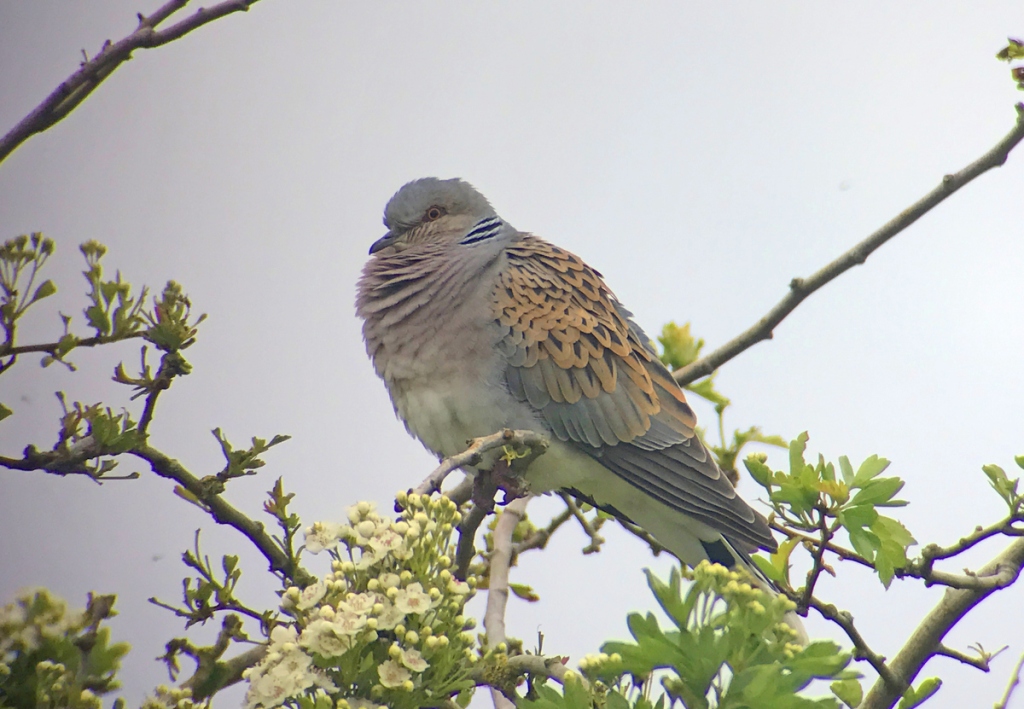
When the Turtle Dove finally landed in a different bush, further in, we continued on through the bushes. There were lots of warblers singing in here today – Common Whitethroat, Blackcap, Chiffchaff, Reed Warbler, Sedge Warbler and Cetti’s Warbler. We could hear a Lesser Whitethroat rattling ahead of us, but when we walked further up to see if we could find it, it had now moved behind us. We turned to scan the bushes, but it disappeared deeper in still and kept well hidden.
Up on the seawall, the tide was coming in. We could see lots of Brent Geese and Oystercatchers along the water’s edge. In amongst them, we found several groups of Bar-tailed Godwits, and well hidden on the mud a small party of Knot, one or two of both in bright rusty breeding plumage. Several Sanderling were feeding further up along the shore, now in their darker breeding plumage and looking very different from the silvery grey birds we see through the winter.
A single Grey Plover dropped in, looking stunning with its summer black face and belly and bright white spangled upperparts. More Grey Plover in several small flocks flew past over the mud from further up the Wash, and we could see Curlews and more Grey Plover on the mud to the south of us. Looking beyond the waders in the mud, two Great Crested Grebes were out on the Wash.
As we turned back to the bushes, we heard a Yellow Wagtail calling, and just managed to pick it up as it flew over, heading south. A migrant on its way. We dropped back down off the seawall, and continued north. There were lots of Common Swifts on the move too, zooming around low over the bushes looking for insects. We could see more over the marshes just inland, and we remarked that it would be the day to find a rare swift, travelling with its commoner cousins. A trickle of Swallows flew south too.
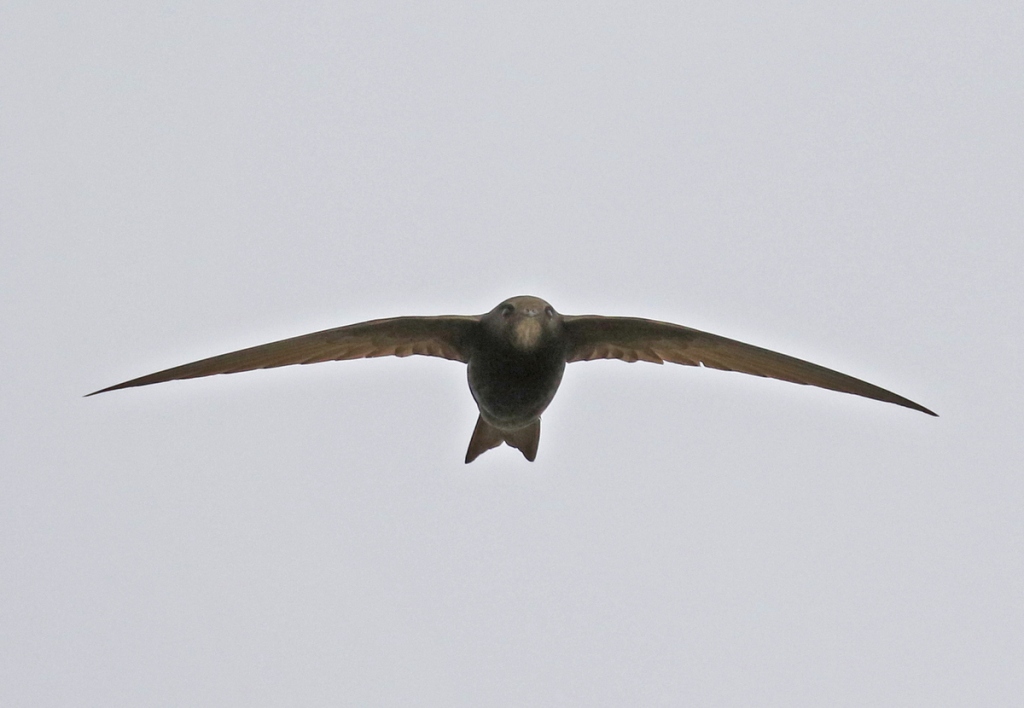
There were lots of Linnets and a few Meadow Pipits which flew up calling as we passed. A Cetti’s Warbler singing from the bushes by the path remained well hidden but a Chiffchaff posed nicely on a bare branch of an elder bush.
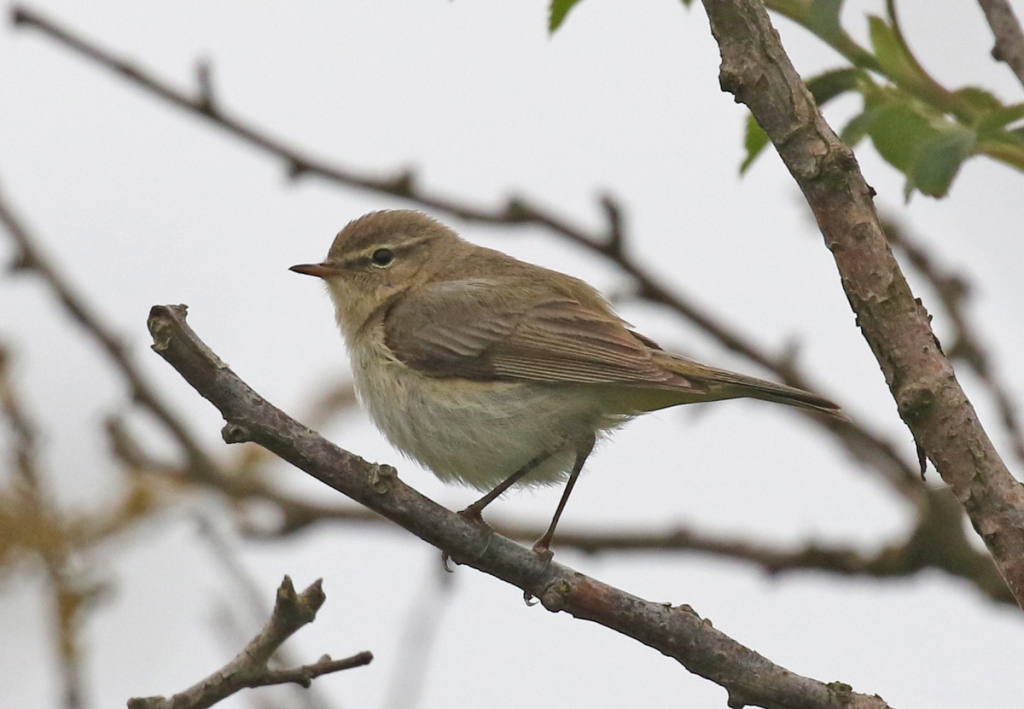
We heard the male Stonechat first, alarm calling. It was in a different place to normal and scanning the bushes confirmed our suspicions – its young had fledged and we could see at least two streaky juveniles nearby. We could hear their squeaky begging calls. A Green Woodpecker disappeared off through the bushes.
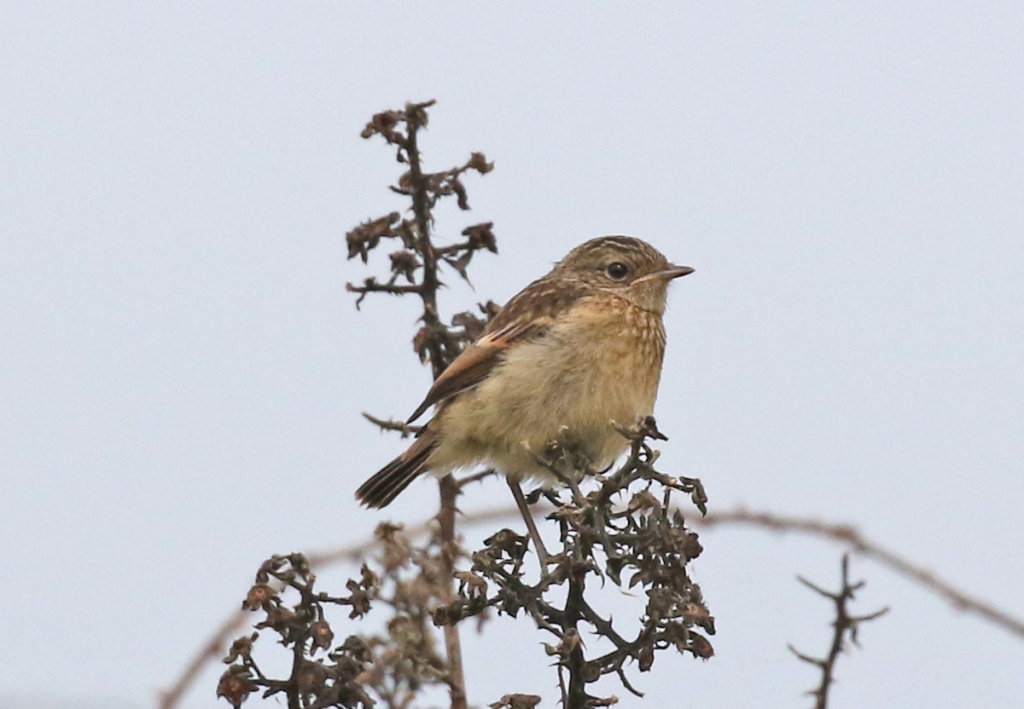
Our third Turtle Dove of the morning now started purring from a dead tree ahead of us, as we carried on north. A couple of Bullfinches chased each other off into the bushes. A small bird dropped out of the sky onto a low bush on the seawall and we turned to see it was a Lesser Redpoll. It was presumably attracted down by some Linnets in the bushes, but didn’t linger and flew off calling back along the seawall.
When we got to the crossbank, we had another look out over the Wash. The tide was coming in fast now. We could see more Oystercatchers and Sanderling on the beach to the north, along with a couple of Ringed Plovers. Another Ringed Plover was in one of the cordoned off areas higher up on the top of the sandy beach, but was disturbed by a dog which came running out of the bushes and up onto the seawall above it. The Ringed Plover walked away down the beach. The dog’s owner emerged from the bushes blowing on a whistle and eventually got their pet back under control.
We walked over to the inner seawall and climbed up to scan the marshes the other side. It didn’t take long to spot a Little Gull hawking for insects over the pools, it’s buoyant flight more tern-like. A second Little Gull appeared with it, both of them young, 1st summers or 2nd calendar year birds with a black ‘w’ pattern across the upperwings.
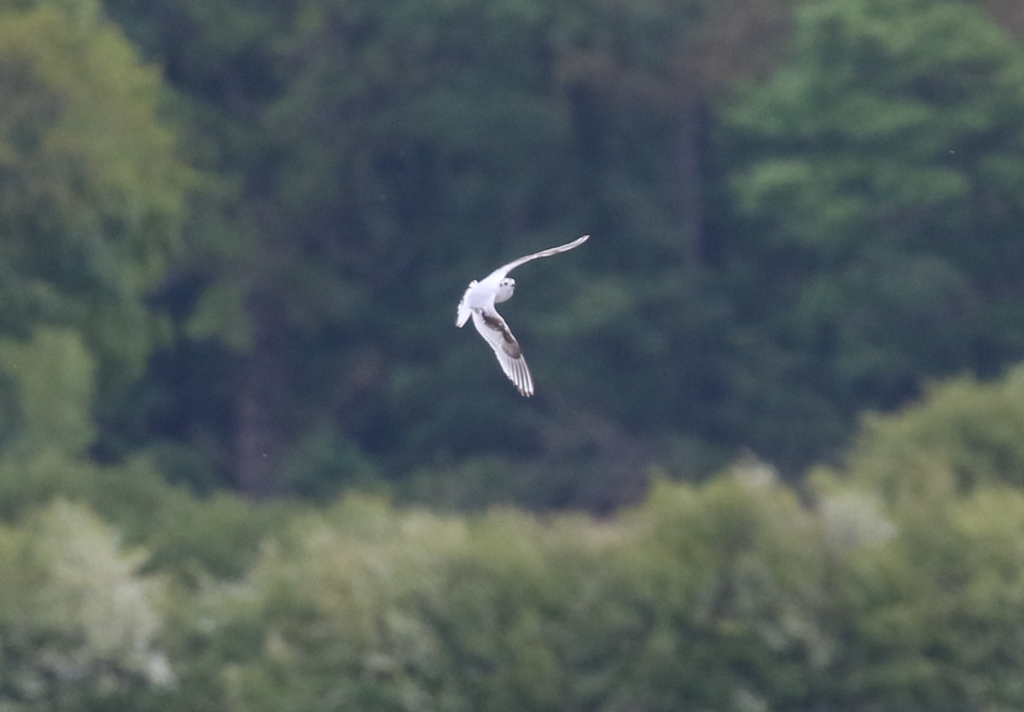
There were lots of Oystercatchers on the pools at the back, come on here to roost over high tide. We could see several groups of Black-tailed Godwits too, doing the same thing. The Avocets, Lapwings and a few Redshank are breeding on here, all species which are benefiting from the recent creation of these marshes.
There were ducks too, including two or three late lingering Wigeon, several Tufted Ducks and one or two Common Pochard. Scanning carefully through the Greylags, Canada and Egyptian Geese, we eventually found two Pink-footed Geese asleep. We couldn’t see but these are most likely injured birds which were probably show and winged and are now unable to make the long journey back to Iceland to breed.
While we were looking at the geese, one of the group spotted a Golden Plover by a small pool on the grassy area across the middle of the marshes, a very smart summer adult with dark face and bellow. A Whimbrel was a bit further back on the grass.
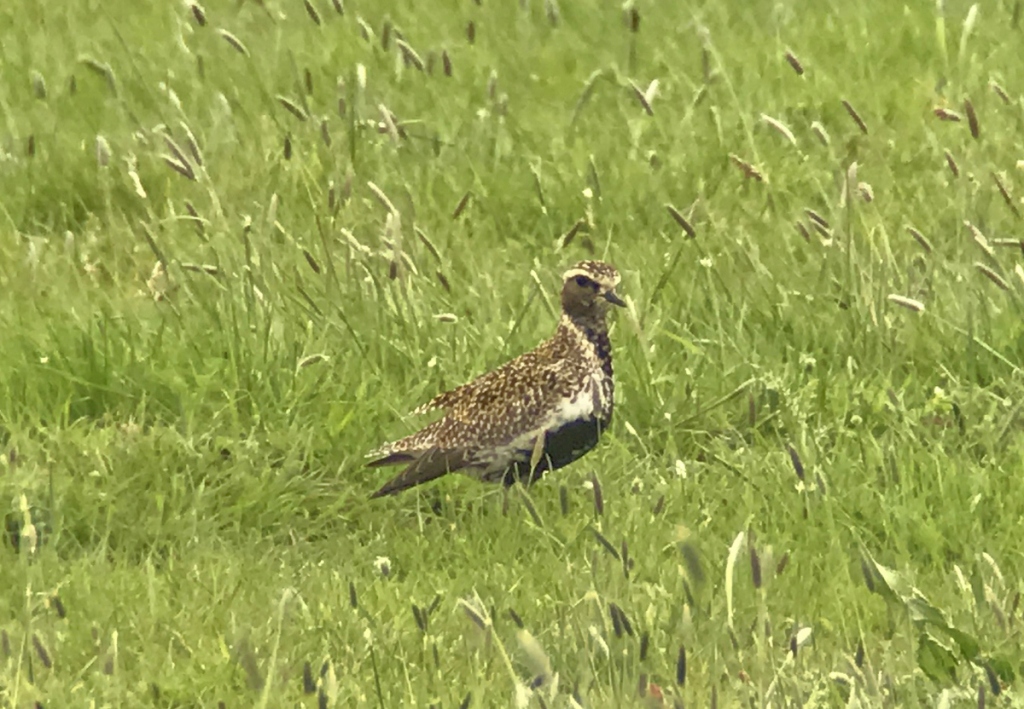
An Alpine Swift had been seen flying past West Runton and Cley earlier – as we had predicted, it was a day for a rare swift. Now news came through that it had passed quickly over Titchwell and Holme. There were still hundreds of Common Swifts pouring down along the coast towards us and gathering to feed over the marshes, so we started scanning through, in case it should come through here. It took a while for the Alpine Swift to get to Hunstanton, then it turned south over cliffs, seemingly heading our way. We could even see Hunstanton in the distance to the north of us, but despite our best efforts we couldn’t find it. It had probably turned out across the Wash before it got to us – so near, and yet so far!
We walked back to the minibus. There had been a pratincole for the last hour or so over Cley and Salthouse, so we thought we might head over there to try to see it. But we had just set off in the minibus when a message came through to say that it had flown off high west. So we diverted to Titchwell for lunch and to use the facilities.
It was still dry but cloudy when we got to Titchwell, so we had lunch in the picnic area. A Marsh Harrier drifted over and a couple of Blackcaps were singing in the sallows. It had just started spitting with rain as we packed up. There was still no further news of the pratincole, so we decided to head out onto the reserve, where we would have hides to shelter in, should the forecast heavy rain arrive.
As we got out of the trees on the main path, we could hear a Cuckoo calling somewhere round the back towards Fen Hide. A Bittern was booming from deep in the reedbed. We stopped to scan the Reedbed Pool, but all we could see there today were lots of Greylag Geese and a few Common Pochard.
The hides here are thankfully now open again and we arrived at Island Hide just in time, as it started to rain heavily. Looking through the gulls on the small strip island we found several Mediterranean Gulls, including some smart black-hooded adults, in with the Black-headed Gulls (with the brown heads – don’t ask!).
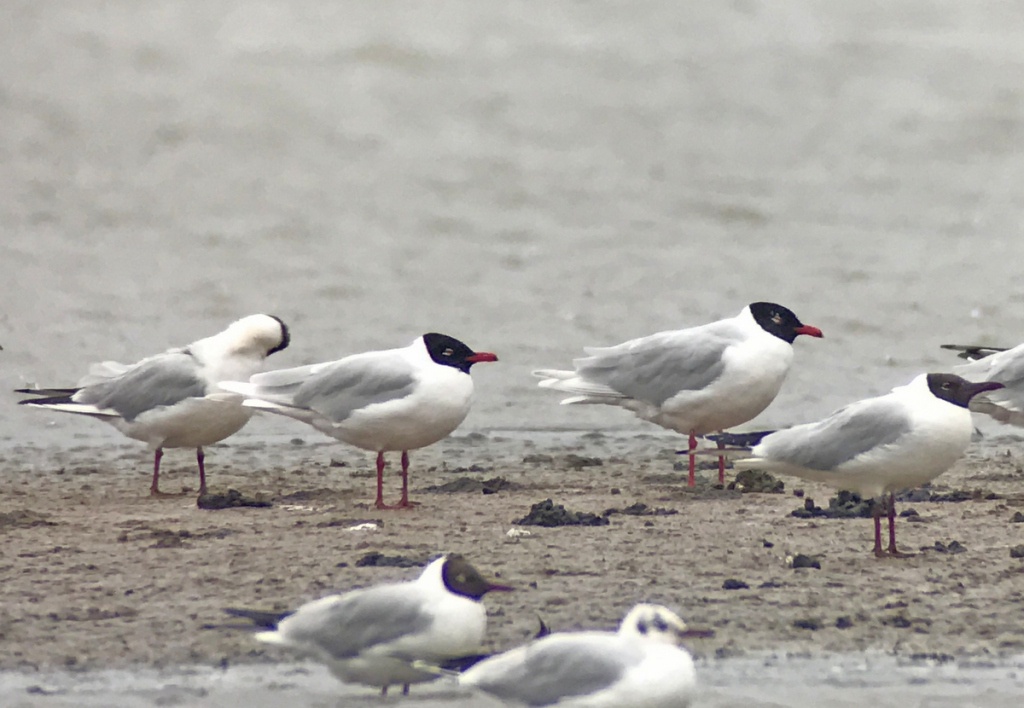
There was a nice selection of terns on the Freshmarsh too. A male Common Tern flew in with a fish for the female, which was resting on the low brick island, but was sent straight back out for more. Two Little Terns were hunkered down on the far end of the island where all the gulls were, but a Sandwich Tern flew in and landed right in amongst the gulls, joined by a second shortly afterwards.
Apart from Avocets, there didn’t appear to be many waders on here today, but looking more carefully we did manage to find a few. There were at least three Little Ringed Plovers, mostly over the far side by Parrinder Hide, although two flew past us at one point with one calling and displaying. There were two Turnstones picking around at the back with a Dunlin. When the Turnstones flew off, the Dunlin flew to the gull island, and was joined by second.
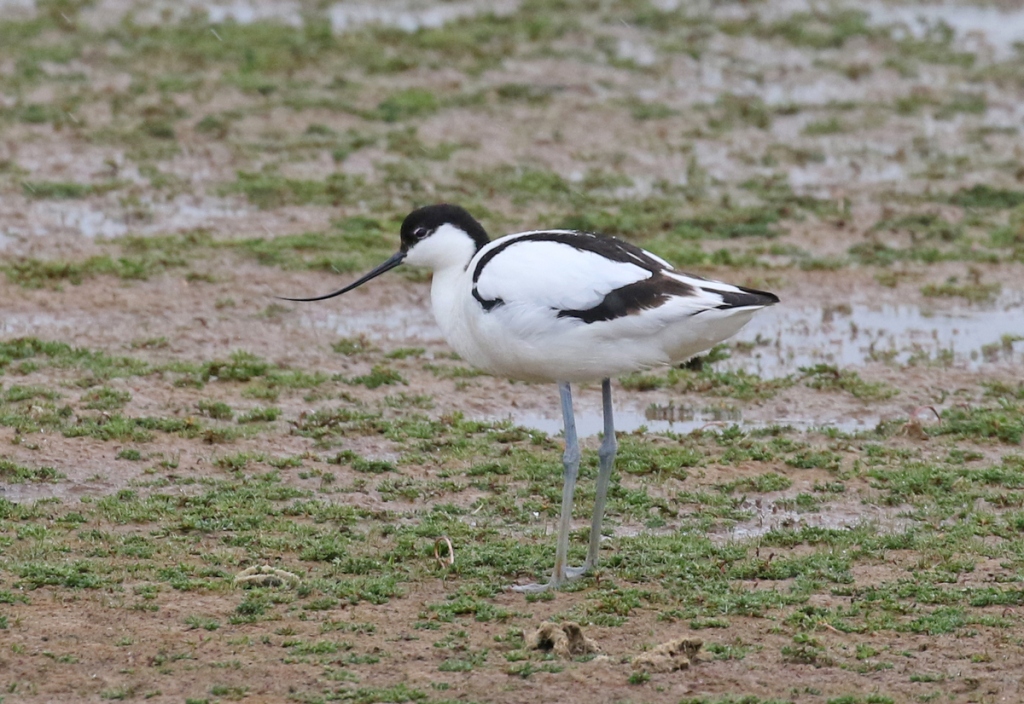
There were lots of Swallows and House Martins hawking low over the water. We looked through them to see if we could find anything with them and did find a single Sand Martin too. A lone Spoonbill flew in from the west, but continued straight over the Freshmarsh without stopping and disappeared over the bank at the back. Thankfully it stopped raining fairly quickly, so we decided to venture out and make a bid for the beach.
The Volunteer Marsh looked quiet as we passed, but we did find a few waders in the wide muddy channel at the far end. Several Grey Plover at the back included two in smart breeding plumage, one of which flew towards us, but just to chase off another in non-breeding plumage about half way down.
As we got to the Tidal Pools, another Spoonbill which had been feeding in the shallow water at the back flew off. There were several Little Terns flying round calling, with one hovering over one of the pools out on the saltmarsh. Two Common Terns were roosting on the end of the spit. There were more waders out here too, a small group of very smart breeding plumage Turnstones on the grass and another summer plumage Grey Plover.
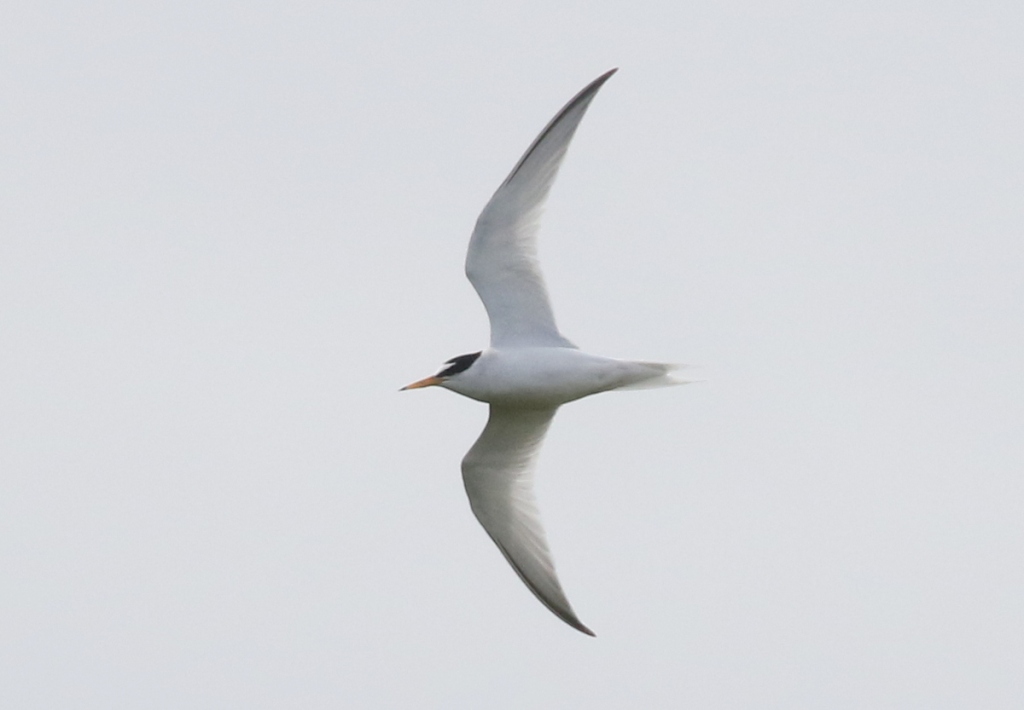
Continuing on to the beach, the tide was coming in and had already covered the mussel beds. A single Little Tern was on the beach away to the east and several Sandwich Terns flew back and forth over the sea. A single adult Gannet with its black-tipped white wings was plunge fishing offshore before heading off east. It was starting to spit with rain again, so we set off back.
We stopped in at Parrinder Hide and were rewarded with much better views of one of the Little Ringed Plovers. We could see its golden yellow eye ring now. Several Marsh Harriers were up and down out of the reedbed.
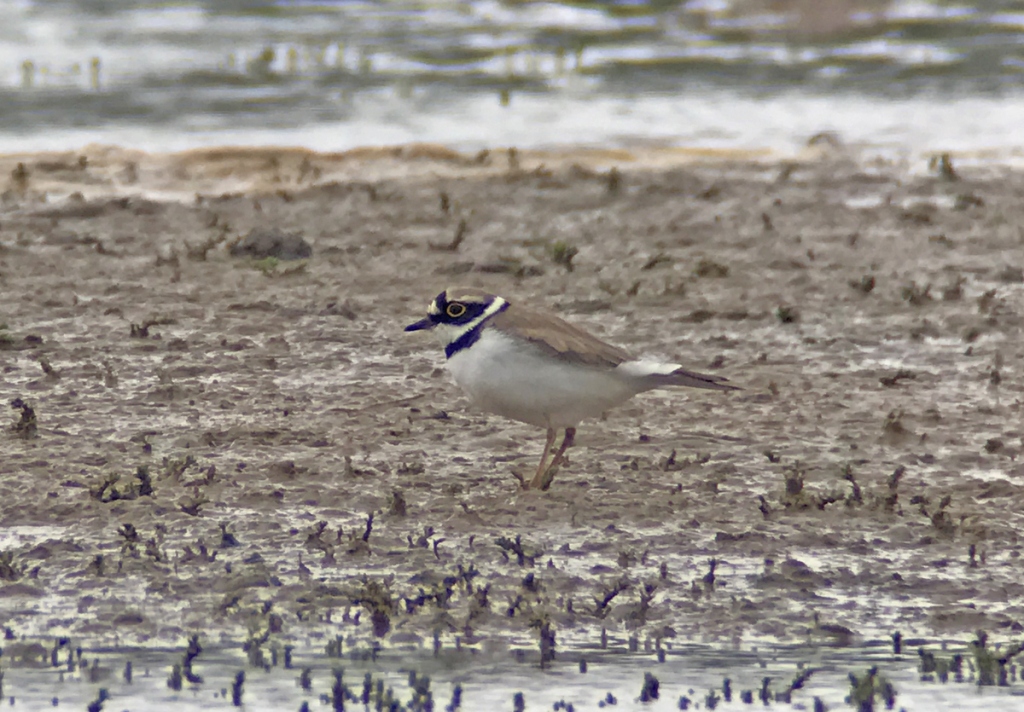
A Little Grebe was diving in one of the reedbed channels as we continued walking back. We negotiated the one way system and went round to have a look at Patsy’s Reedbed. A Cetti’s Warbler shouted at us from the bushes by the Tank Road as we passed.
There didn’t appear to be much on Patsy’s today. An odd looking Greylag Goose swam out from behind the reeds. Clearly unwell, it was very low in the water and seemed to be barely afloat. Through the scope, we could see its skin was bare on the top of its head and around its eyes and bright pink. Its bill was bright reddish too. It sailed out in the direction of a pair of Mute Swans with three cygnets in the middle. The male swan was determined to defend its brood and attacked it, but seemed taken aback that the Greylag didn’t respond. It looked like the swan would drown it.
A Kestrel was perched in one of the dead trees (where a Hobby should be instead!). Several Marsh Harriers circled low over the reedbed, including a couple of smart males, one of which drifted over the pool in front of us. A Lesser Whitethroat was rattling in the hedge behind us.
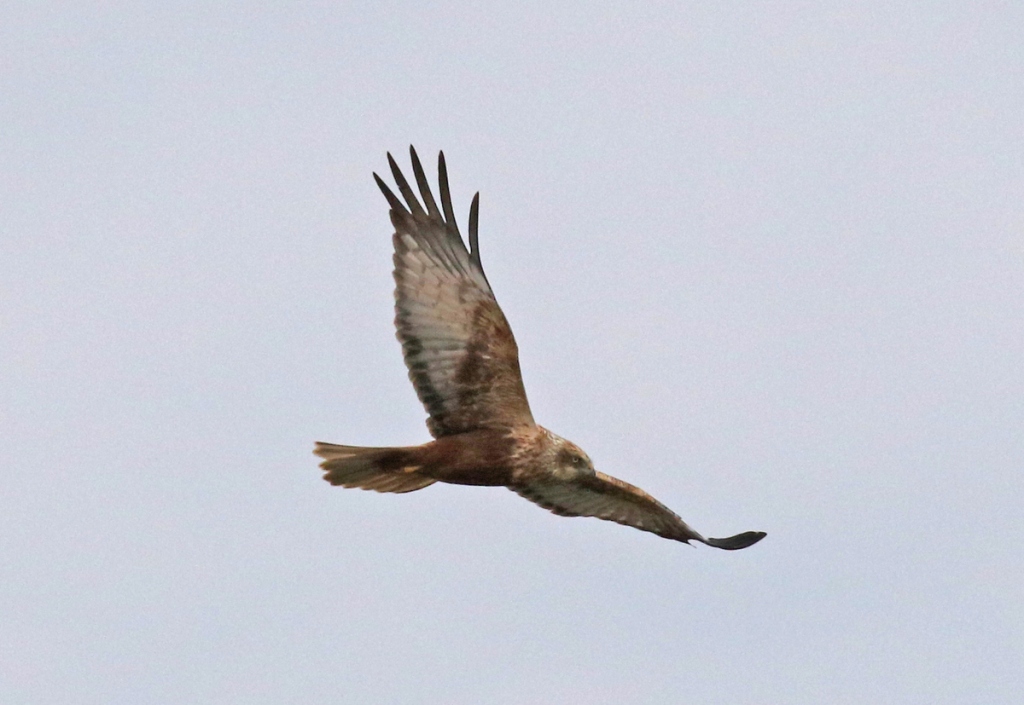
We could see dark clouds behind us and it started spitting with rain again. We had been comparatively lucky with the weather today, given the forecast for heavy rain all afternoon, and it was time to call it a day and head back before we got wet.
















